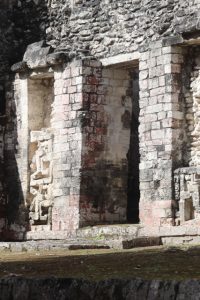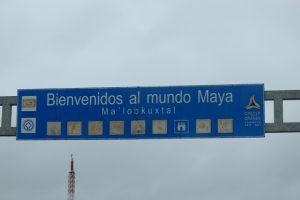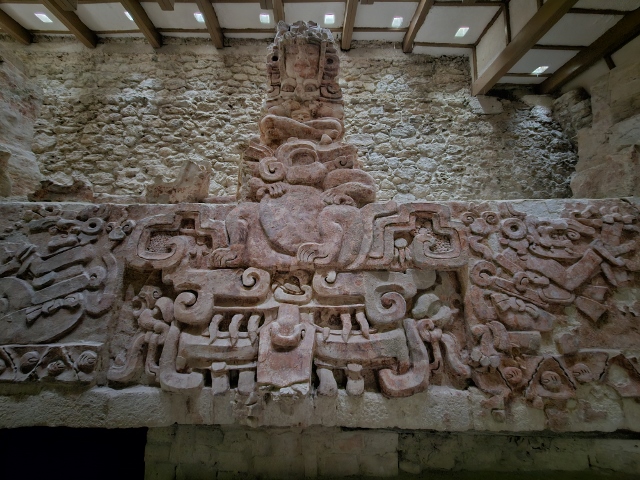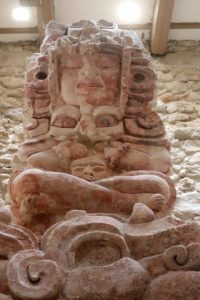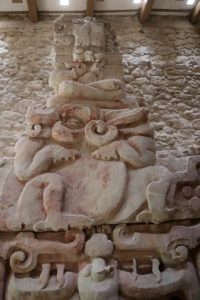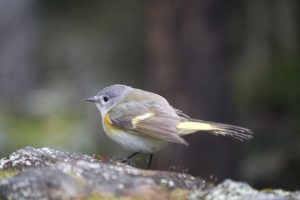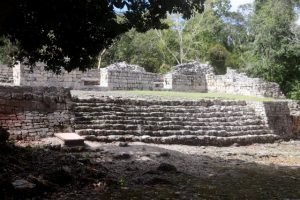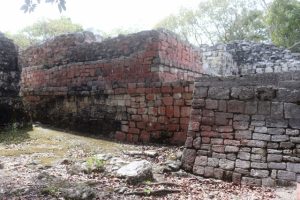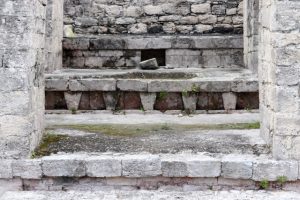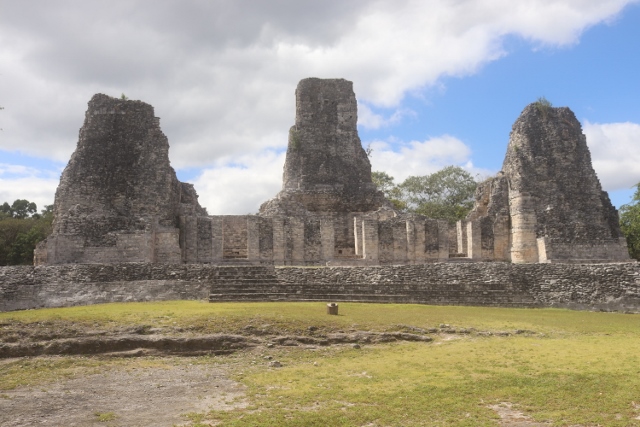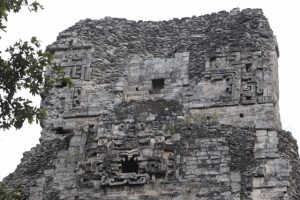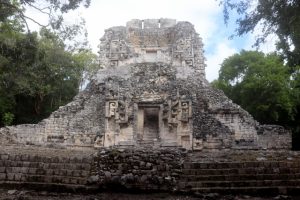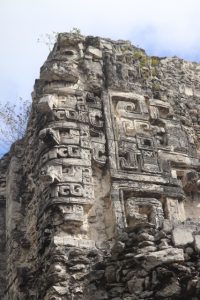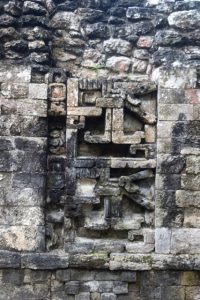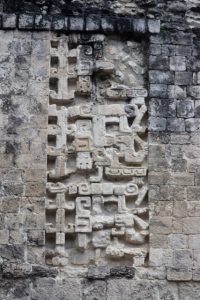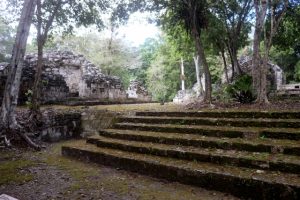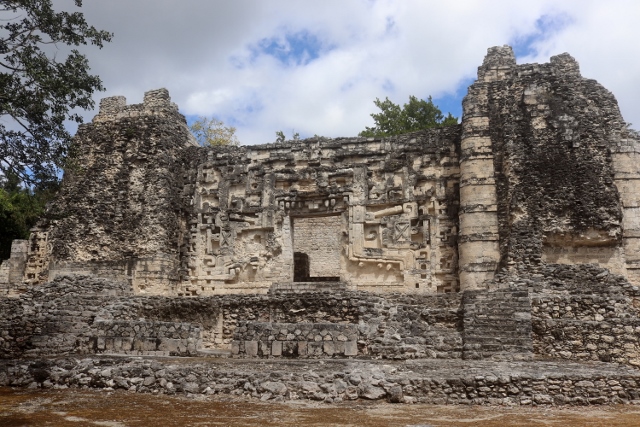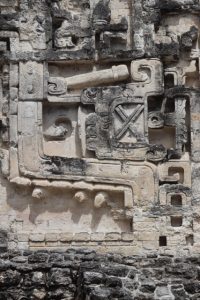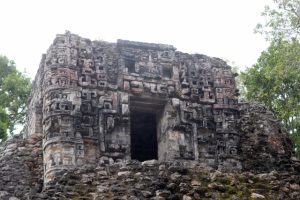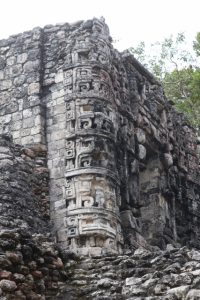There are innumerable Maya sites, big and small, stretching from El Salvador, Honduras and Guatemala to the south of Mexico. The Yucatan peninsula has probably the highest density of sites; many exquisite Maya settlements, large and small. And Ruta 186, the road that cuts across the beginning of the peninsula, from west to east, through what has become known as the Rio Bec area, is as good a start any anywhere.
We start off from Emiliano Zapata, the town named after the famous Mexican revolutionary, who helped overthrow the dictatorial Porfirio Diaz at the beginning of the 20th Century, over improving rights for the poor farmers and reforming land distribution. The day is miserable, overcast and raining almost continuously; the road is almost empty, a two-lane affair with patches full of significant potholes, where everybody steers around liberally. No matter if there is traffic coming from the other way. The trucks we encounter are massive, huge nine-axle monsters, all of them in a hurry. They see nothing wrong in overtaking a slower comrade. Again, no matter if there is traffic coming from the other way. The two-lane road including shoulders is wide enough for three vehicles, including trucks, next to each other, and you just have to adjust to using the full width of the tarmac. Do in Mexico as the Mexican do.
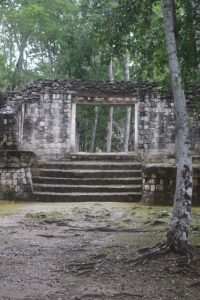
the entrance to the Maya plaza in Balamku, the round corners apparently characteristic for the Rio Bec architecture
Towards midday we reach our first Maya site of the trip, Balamku. This fairly small site, the first in the Rio Bec area, is not very popular with tourists, and unjustly so. There are several groups of buildings, some better preserved than others, some better excavated than others, which is pretty much typical for most Maya sites. In fact, three architectural groups have been identified, but one has not even been excavated yet, a situation we will encounter in many more sites to come, suggesting that archaeological discoveries here have not been exhausted yet. The buildings so far unearthed date from 300 BC to about 800 AD; the site was abandoned around 1000 AD, as so many sites, for unknown reasons.
But Balamku’s fame comes from a rare series of stucco friezes at the far end of the site, over 15 meters long and 1.7 meters high. It has been described as ‘the death and rebirth of Maya kings as the sun god, traveling into and out of the watery underworld’, something I didn’t manage to recognise myself when I stood in front; I had already difficulty picking out the snakes and the frogs in the frieze, but a helpful guide pointed out several of the details. Even without fully understanding it, this is a beautiful piece of artwork, dating from the 6th Century AD.
And then for the bad news: we learn in the local village that Calakmul, the most important Maya site in this area, rivalling Tikal and Palenque, is already closed for the day, and also closed the next day – every Monday in February – because of works. And we are not going to wait for Tuesday. Pitty, but there are enough other sites to discover, no doubt.
We base ourselves in the small town of Xpujil – I know, Mexican names are impossible to pronounce, this, apparently, needs to sound like Shpoo-heel. Not a very exciting place, a typical rural town with low-rise buildings, mostly ugly square houses and shops, or combinations of the two.
But Shpoo-heel is also home to a Maya complex, Xpujil, which is known for its three-tower structure, at the far end of the complex. Quite a structure it is, including its decorations at the back of the middle tower, in which some sources have recognised a jaguar. There are several other structures scattered around, and the site is – like so many of the sites we will visit – very well arranged, with a non-invasive path – no tarmac, but stones and earth – winding through the jungle, that leads past each of the areas of interest.
A little backtracking brings us to Chicanna, once again well organised with a well-laid out, but humble path past the various structures. Despite it being just a short drive from Xpujil, and only a short distance from the main Ruta 186, we are the first once here, today, and we have the site for ourselves. There are several large buildings, with towers and elaborate decorations; the highlight is a beautiful doorway with sculpturing to the left, to the right and above the door. Chicanna, only discovered in 1966, is interpreted as a residential site for the elite, and was occupied from 300 AD to 250 BC.
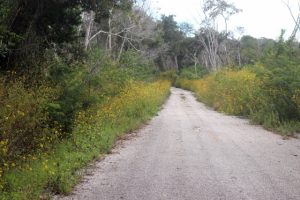
access road to Hormiguero, once a two-lane road, not weeds encroaching such that it is barely one lane
Hormiguero takes a bit more effort to get to. We take a road to the south, and then another road, tarmacked but potholed, and in several places the two lanes that had been reduced to barely one lane, inching our car in between the yellow weeds. We are not just the first ones today, but likely the only ones. Entrance is free, yet, once again the site is well laid out, and the now familiar path leads past a number of fabulous buildings, with the main pyramid more elaborately decorated than we have seen so far. Incredible that such a site, such a splendour, is hardly being visited – because there is so much more to see, I suppose.
As usual, we have spent much more time than planned at the various Rio Bec sites. To add insult to injury, we find out that Mexico actually has several time zones, and that Quintana Roo, the province we have just entered, is one hour ahead. Which means that by the time we reach Kohunlich, another site we wanted to see, it is almost closing. We skip it, also because the Ruta 186 has turned into a nightmare; yesterday, Sunday, was fairly quiet – and yet stressful because of the driving style -, today, Monday, the road is cloaked with trucks, many of which are supporting the two major infrastructure projects here, a new motorway and the Tren Maya, a railway project – the current president’s pet project, apparently – trying to connect various places in Yucatan. Meant to provide transport for the poor, although I understand that the poor will not be able to afford the ticket prices, by a long shot. The truck carry materials for the projects, which have access roads every few kilometers, or so, manned by traffic wardens that stop the cars if a truck needs to turn off, or onto the road. Which doesn’t do much for our progress, and that of everybody else.
